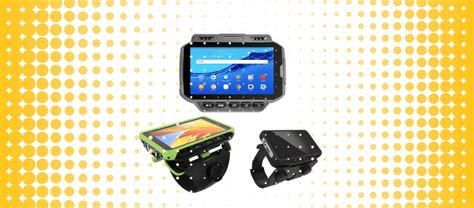What are pet wearables?
Pet wearables are electronic devices attached to the body of a pet, such as a collar or a harness. These devices collect data about the pet’s activity, health, and location, which can be transmitted to a smartphone app or website.

Types of pet wearables
There are many different types of pet wearables available on the market, each with its own unique set of features and capabilities. Some of the most popular types of pet wearables include:
Activity trackers
Activity trackers are designed to track the pet’s activity levels, such as steps taken, distance traveled, and calories burned. This information can be useful for monitoring the pet’s overall health and ensuring they are getting enough exercise.
GPS trackers
GPS trackers are designed to track the pet’s location using a combination of GPS and cellular technology. This information can be useful for finding a lost pet or tracking their movements over time.
Health monitors
Health monitors are designed to track the pet’s vital signs, such as heart rate, respiratory rate, and temperature. This information can be useful for detecting potential health problems early on and ensuring the pet is getting the care they need.
Behavior monitors
Behavior monitors are designed to track the pet’s behavior, such as barking, scratching, and chewing. This information can be useful for identifying problem behaviors and training the pet accordingly.
Pros and cons of pet wearables
Pet wearables offer a number of potential benefits, such as:
- Providing peace of mind knowing that the pet is safe and healthy
- Helping to identify and prevent health problems
- Promoting a more active and healthy lifestyle for the pet
- Allowing the pet to be tracked in case of a lost
- Providing insights and information about the pet’s behavior
However, there are also some potential drawbacks to using pet wearables, such as:
- Cost: Pet wearables can be expensive, especially models with advanced features.
- Convenience: Pets may not always want to wear a tracking device, and the device may need to be recharged or replaced regularly.
- Privacy concerns: Some pet wearables collect and store sensitive information about the pet, such as their location and activity levels. This information could be hacked or misused.
Current status and future trends
The market for pet wearables is growing rapidly. According to a report by the American Pet Products Association, the market for pet wearables is expected to reach $1 billion by 2025.
The growth of the market is being driven by a number of factors, such as:
- The increasing popularity of pet ownership
- The rising demand for pet health and wellness products
- The development of new and innovative pet wearable technologies
Tips and tricks for using pet wearables
There are a few tips and tricks to keep in mind when using pet wearables:
- Choose a device that is appropriate for the pet’s needs and lifestyle.
- Make sure the device is comfortable for the pet to wear.
- Monitor the device regularly to ensure that it is working properly.
- Keep the device charged or replaced as needed.
- Be aware of the privacy concerns associated with pet wearables.
Effective strategies for using pet wearables
There are a number of effective strategies for using pet wearables to improve the health and well-being of the pet. These strategies include:
- Using activity trackers to monitor the pet’s activity levels and ensure they are getting enough exercise.
- Using GPS trackers to track the pet’s location and ensure they are safe and not lost.
- Using health monitors to track the pet’s vital signs and detect potential health problems early on.
- Using behavior monitors to identify problem behaviors and train the pet accordingly.
Market insights
The market for pet wearables is a rapidly growing market with a lot of potential. There are a number of factors that are driving the growth of the market, such as the increasing popularity of pet ownership, the rising demand for pet health and wellness products, and the development of new and innovative pet wearable technologies.
The market is expected to continue to grow in the coming years, with a number of new products and technologies expected to be released.
Conclusion
Pet wearables offer a number of potential benefits for pet owners. These devices can provide peace of mind, help to identify and prevent health problems, promote a more active and healthy lifestyle for the pet, allow the pet to be tracked in case of a lost, and provide insights and information about the pet’s behavior.
When using pet wearables, it is important to choose a device that is appropriate for the pet’s needs and lifestyle, make sure the device is comfortable for the pet to wear, and monitor the device regularly to ensure that it is working properly.





















